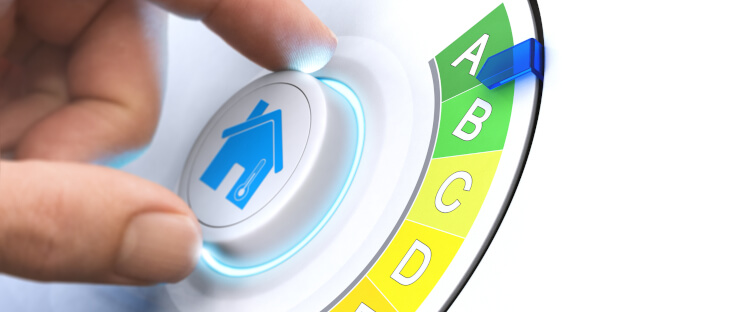
Which survey should I choose?
The Royal Institution of Chartered Surveyors (RICS) offers three main types of surveys – the Condition Report (1), Homebuyer Report (2) and Building Survey (3). Each provides a different level of detail and is suited to different property types and situations but choosing the right survey can seem confusing and overwhelming when you’re not familiar with what they entail.
Armed with the right information, you can instruct the most appropriate survey with confidence. A thorough survey report will provide vital peace of mind and allow you to make a fully informed buying decision, potentially saving you thousands in future repair costs and headaches.
Types of House Survey
There are several different types of house surveys available, and which survey you choose depends on the level of detail you require, your budget, and the age and condition of the property.
Note: In 2021, the Royal Institution of Chartered Surveyors (RICS) launched updated formats for home survey reports. The old Condition Report, Homebuyer Survey and Building Survey have been replaced with Level 1, 2 and 3 reports.
RICS Condition Report (Home Survey Level 1)
This is the most basic and affordable survey. It is suitable for conventional properties built from common materials that appear in reasonable condition. The Level 1 survey provides a traffic light rating of the condition of the building, services and grounds, which highlights problems needing varying degrees of attention and summarises risks. However, it does not go into much detail, provide advice or include a valuation.
A Level 1 survey can be a good option when buying a newly constructed or relatively modern property. Since these surveys are designed for newer buildings made using common materials, they work well for homes that don’t have complex or unusual features requiring intricate inspection.
Additionally, if the property appears to be in good overall condition, with no visibly obvious structural flaws or defects, this level of assessment providing a general overview of the current condition may be adequate.
Some purchasers opt for a Level 1 survey primarily for obtaining their mortgage valuation or as supplementary information to complement a more detailed structural survey. First time buyers unfamiliar with what to inspect often find the Level 1 useful as an initial overview before committing to a purchase.
Finally, buyers who don’t require mortgage financing and are paying cash may feel less need for an intrusive, comprehensive inspection and value the general feedback a Level 1 survey provides on a home’s current state.
RICS Homebuyers Survey (Home Survey Level 2)
This mid-level survey is popular for most people buying a typical property in decent condition. It covers everything in a Level 1, plus checks roof spaces and basements. Recommendations for further investigations are provided where the surveyor cannot reach a confident conclusion. It also advises on repairs needed and future maintenance needs.
The Level 2 report works best for conventional, traditionally built properties that aren’t brand new construction but also not in disrepair. For most buyers, it strikes the right balance of detail versus cost. The valuation survey is carried out separately by your bank so they can make an informed decision on the value of the property and what they’re willing to pay based on its condition.
RICS Building Survey (Home Survey Level 3)
The Level 3 RICS Building Survey is the most thorough RICS survey available, and it’s recommended for older, unusually constructed, listed or run-down properties. It is particularly useful if you’re planning renovations or having concerns about whether to buy a property.
The Level 3 survey includes everything in a Level 2 but goes into greater depth, identifying, diagnosing and advising on the scope of remedial work and the possible consequences of not repairing issues. Recommendations for repair priorities and timescales are also provided within a Level 3 report. We will also provide a full estimate of the cost of repairs for any defects identified, while some competitors will charge extra for this.
The Level 3 survey is most advantageous for buyers of older, period properties over 50 years old. Due to their age, these homes are more likely to have issues requiring discovery through the Level 3’s meticulous inspection.
Similarly, properties designed and constructed in an unusual, non-standard manner call for the expert assessment the Level 3 provides. This level of survey may also be recommended when major renovations, extensions or conversions are planned, as it informs the work required.
For total peace of mind, the most risk-averse buyers will often opt for the comprehensive Level 3 building survey, regardless of other factors. It provides the most information and detail to help avoid any problems in the future.
Choosing the Right Surveyor
The quality and usefulness of the survey depends almost entirely on the expertise and diligence of the surveyor you choose to instruct. The Royal Institution of Chartered Surveyors is the leading professional body for surveyors. Choosing an RICS member ensures your surveyor meets rigorous standards for qualification and expertise. At Cosey Homes, we’re accredited by RICS, the Chartered Association of Building Engineers and the Chartered Institute of Building.
Taking the time to find the right surveyor for your property purchase is just as important as choosing the right survey. Don’t automatically go with the cheapest option, as detailed report from an experienced professional will give you invaluable peace of mind. For further advice on the best home survey for your circumstances, please don’t hesitate to get in touch with a member of our team.